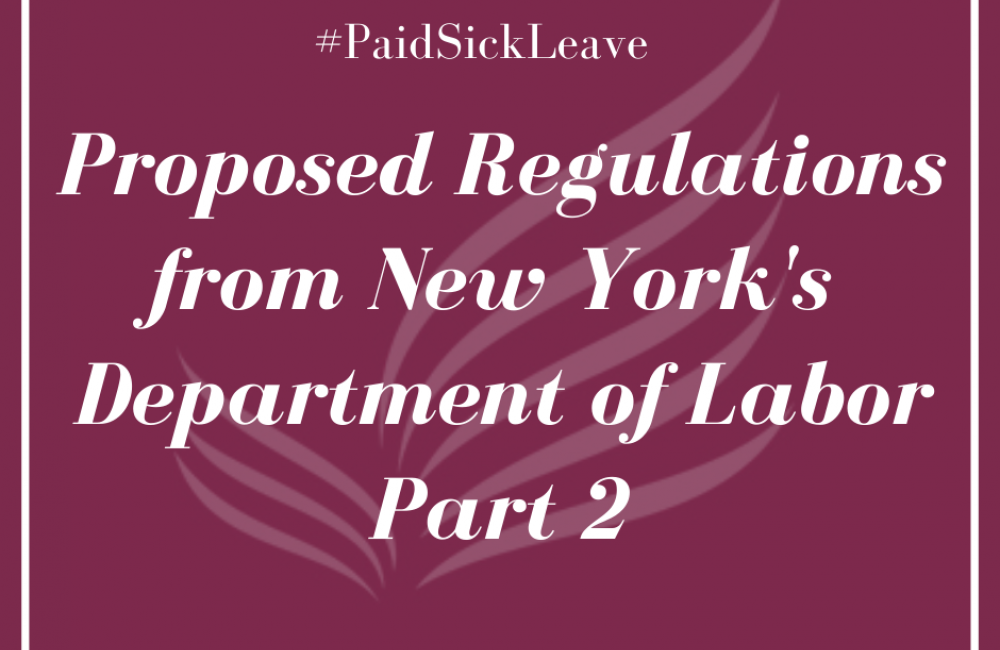As we previously reported, the New York Department of Labor (DOL) has issued proposed regulations in connection with Paid Sick Leave (PSL), which was effective on September 30, 2020 and is available for use beginning on January 1, 2021.
We knew that employers with four or fewer employees and previous year’s net revenue under $1 million must provide 40 unpaid hours of sick leave; employers with more than four employees or over $1 million dollars in net revenue must provide 40 paid hours of sick leave; and that employers with 100 or more employees must provide 56 hours of PSL. In the proposed regulations, we learn that employers must count employees based on the highest total number of employees currently employed (not based on the last year or another defined measurement date).
What happens if you currently fit in the unpaid leave category and you hire a fifth employee, which would require you to provide paid sick leave? Or what if you hire your 100th employee and now have to provide 56 hours of PSL? The process has now been outlined.
The change from unpaid to paid leave or increase from 40 to 56 hours, whichever situation is applicable, is prospective from the date the fifth or 100th employee was hired, respectively.
Changing from unpaid leave to paid leave. This occurs when an employer moves from four to five employees mid-year. At that time, employees become eligible for paid leave, but they need not be paid for any PSL time they previously used. However, once the employer moves into the paid leave category, any leave that’s taken must be paid leave, even if the leave hours had been accrued while under the unpaid obligation.
And, of course, any newly-accrued leave must be paid leave. Hours of leave that an employee already had earned, but had not yet used, can be counted towards the 40 hours of now-paid leave. But if an employee already had used any leave to date, they get to start afresh, accruing up to 40 total hours of paid leave through year end.
Increasing from 40 hours to 56 hours. As long as it is written in the employer’s policy, employees will be limited to 40 hours of PSL in the calendar year in which the employer started out with fewer than 100 employees. Unlike the switch from unpaid leave to paid leave, accrued PSL, whether used or not-yet-used, is towards the new 56-hour PSL obligation.
After all of that, you might think – what happens if my business has less than $1 million in net income and we have a workforce reduction to four employees? Are we then eligible to move down a category? Not so fast.
The DOL has stated that a reduction, unlike an addition, of employees affects only the following calendar year. So if a company reduces from five to four employees in March, all remaining employees must continue to accrue and be entitled to use paid sick leave days for the rest of the calendar year. If the company remains at four or fewer employees into the following year, then any sick leave would become unpaid as of the beginning of the following year.
If you have questions on Paid Sick Leave and its corresponding guidance, reach out to a member of our team. We’d be happy to help guide you through the new law, the DOL’s previously-issued guidance, and the proposed regulations. And, remember, having a well-written policy about PSL provides clarity for your company and can limit your exposure as an employer.

